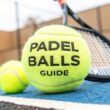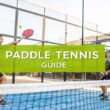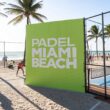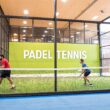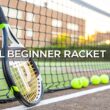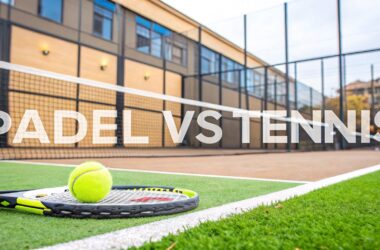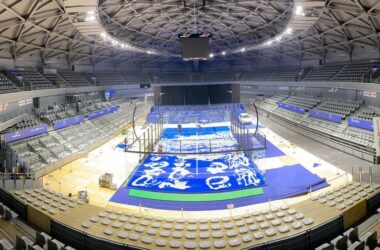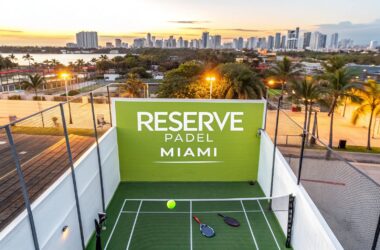So, you're thinking about building a padel court? The big question on everyone's mind is always the same: what's the bottom line?
For a standard padel court setup here in the UK, you're generally looking at a total padel court cost somewhere in the ballpark of £45,000 to £75,000. This isn't just a number plucked out of thin air; it covers the whole shebang, from digging the first hole for the foundation right up to flicking the switch on the final light fixtures.
Unpacking the Padel Court Investment
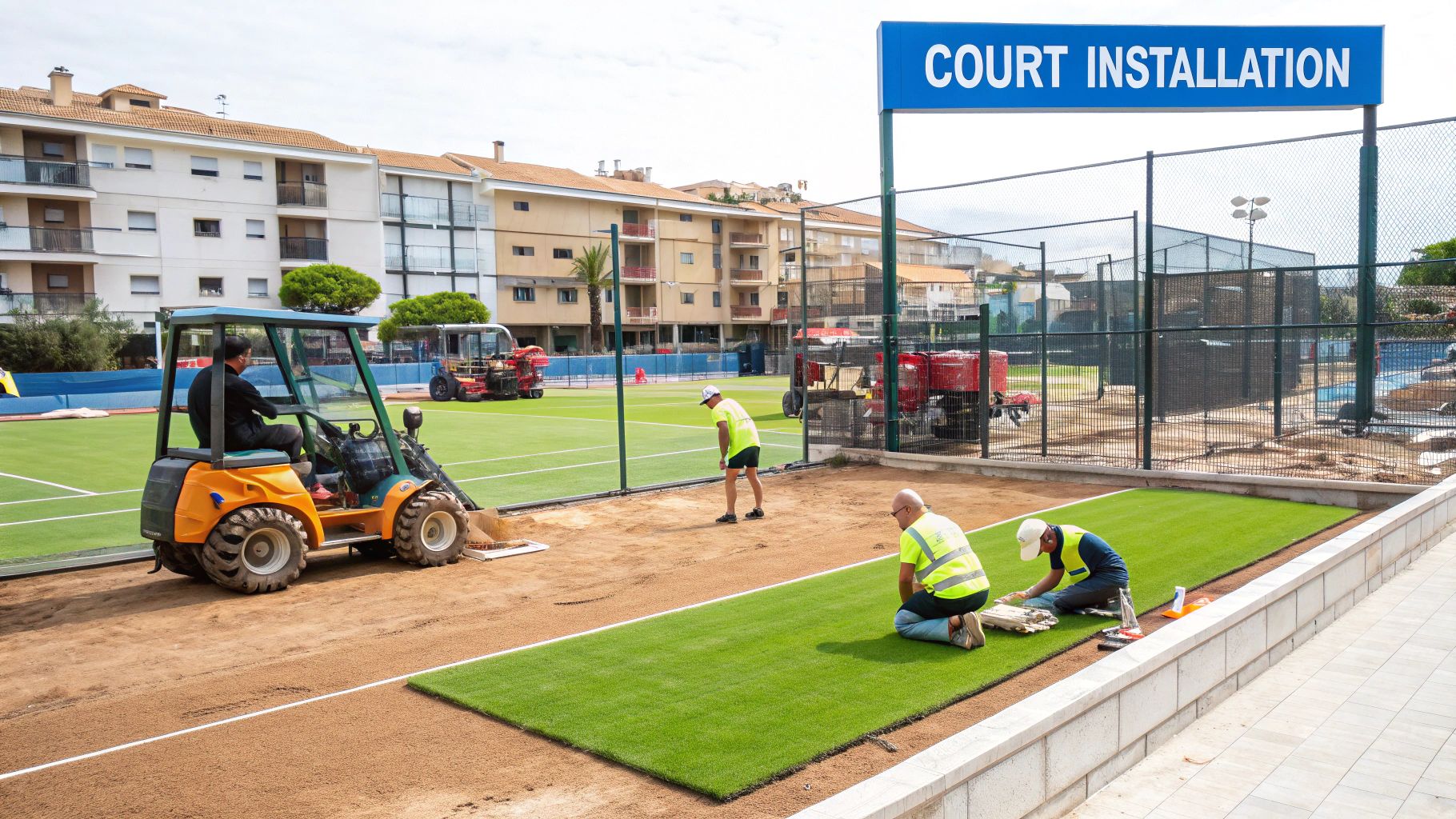
Before we get into the nitty-gritty, it's helpful to think of building a padel court like building a small, specialized structure. Just like two houses of the same size can end up with wildly different price tags based on location, materials, and finishes, the same holds true for a padel court. The numbers can swing quite a bit depending on how complex your project is.
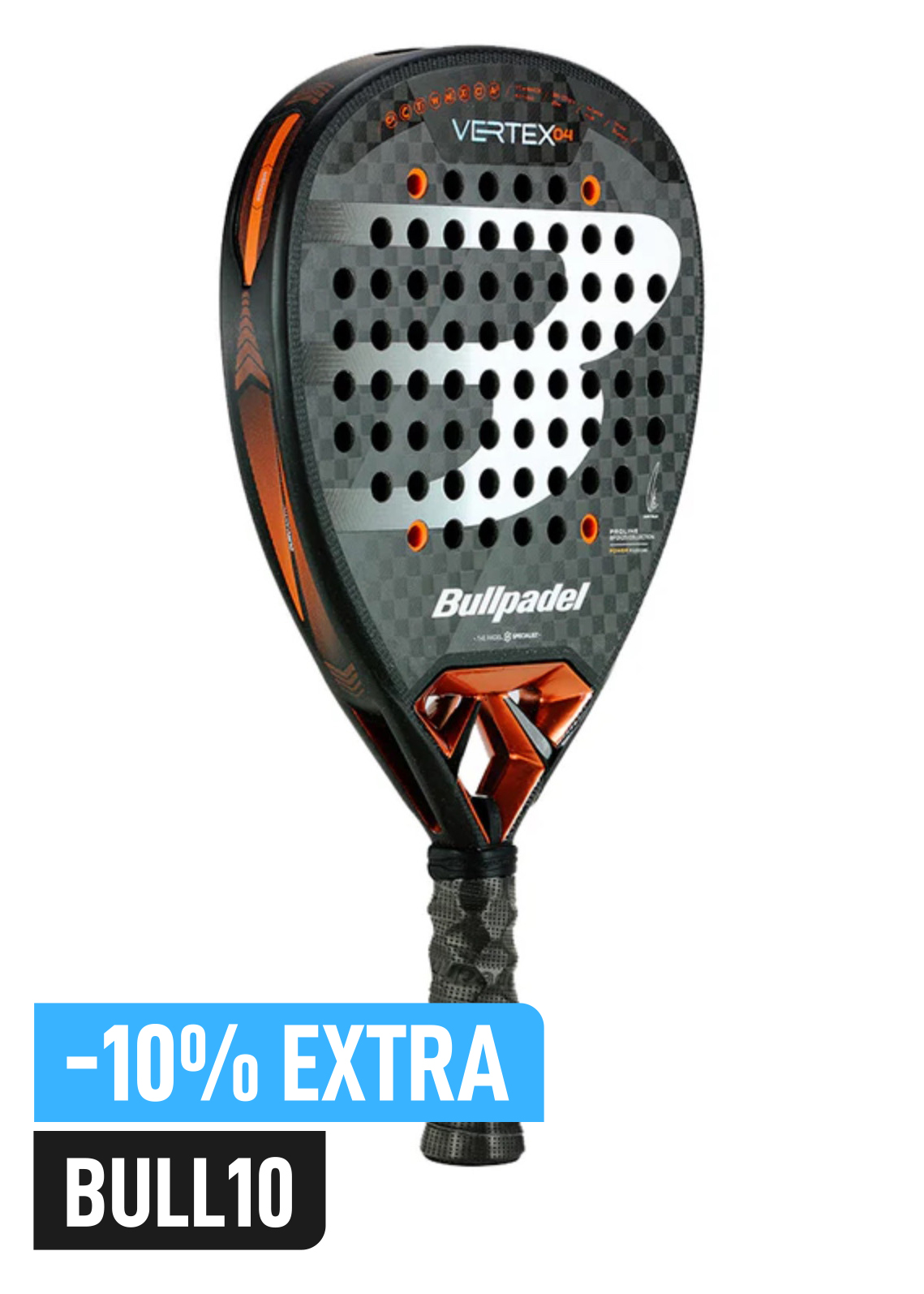
Buy the best padel gear to level up your next game!
CHECK OUT this deal from Padel Market!Get ready to take your game to the next level with the latest padel gear from Padel Market! Fast EU and Worldwide Shipping
Things like your specific location, the quality of materials you choose, and just how much prep work your site needs will all play a massive role. In the UK market, that £45,000 to £75,000 figure typically includes the court surface, glass walls and fencing, lighting, and any basic access paths. But be prepared: the groundwork and foundation alone can often eat up nearly half of the entire budget.
Quick View Padel Court Cost Components
To give you a clearer picture of where your money goes, let's break down the total investment into its main parts. While every project has its own unique quirks, the budget usually gets sliced up in a pretty predictable way.
Here’s a quick summary of the main expenses you'll need to account for.
| Expense Component | Typical Cost Range (UK) | Percentage of Total Budget (Approx.) |
|---|---|---|
| Groundwork & Foundation | £15,000 – £30,000 | 35-45% |
| Court Structure & Glass | £12,000 – £20,000 | 25-30% |
| Artificial Turf & Sand | £5,000 – £9,000 | 10-15% |
| Lighting System (LED) | £4,000 – £8,000 | 8-12% |
| Labor & Installation | £6,000 – £12,000 | 12-18% |
| Shipping & Logistics | £1,500 – £3,000 | 3-5% |
Getting a handle on these different components is the first real step toward building a realistic budget. If you want to dive deeper into managing project costs from the get-go, it's worth understanding the role of a quantity surveyor in construction costs.
A successful project isn’t just about the final product; it’s about meticulous financial planning from day one. Overlooking even a small component can lead to unexpected budget increases down the line.
Ultimately, the quality of your materials and the expertise of your installation crew will shape not only the upfront padel court cost but also how durable it is and how much maintenance it'll need over the years. Choosing the right professionals is every bit as important as picking the right turf. You might find our guide on finding qualified https://padelrumors.pages.dev/news/padel-court-builders/ helpful to make sure your project is in good hands.
Breaking Down the Core Construction and Groundwork Costs
While knowing the total cost of a padel court is a great starting point, the real story is in the details. The final number on your invoice is built from a few major expenses, and getting a handle on these core components is the key to managing your budget and not getting any nasty surprises. Let's peel back the layers and see what makes up the bulk of your investment.
Think of it like building a house. The most critical—and often most expensive—part is the foundation. You can have the best furniture and fanciest kitchen, but if the base isn't solid, the whole thing is a disaster waiting to happen. It’s the exact same principle with a padel court, making the groundwork the most variable and crucial part of the entire project.
The All-Important Groundwork and Foundation
Before any turf gets unrolled or glass panels go up, the ground itself has to be perfectly prepared. This phase is all about excavation, levelling, and creating a super-stable base that can handle years of intense play and whatever the weather throws at it. The cost here can swing wildly depending on what your site looks like to begin with.
For instance, a patch of land that's already flat with good drainage is going to be way cheaper to prep than a sloped, lumpy area with poor soil. In some cases, major earth-moving and installing a proper drainage system can add thousands to the final padel court cost, often gobbling up 35-45% of the total budget. This is exactly where those unexpected expenses tend to pop up.
The go-to, industry-standard foundation for a padel court is a reinforced concrete slab. There's a good reason it's what all the pros recommend:
- Built to Last: A concrete base gives you a rock-solid, perfectly level surface. It won’t shift or sink over time, keeping your court in top shape for decades.
- Player Performance: It's the only way to guarantee a true, consistent ball bounce and a safe playing surface. Happy players are safe players.
- The Process: Building it involves pouring a slab of concrete, usually around 10-15 cm thick, with a steel mesh inside to stop it from cracking.
Getting the foundation right is non-negotiable. Seriously. Trying to save a few bucks here is a classic mistake that almost always leads to much bigger repair bills down the road for things like cracked surfaces or flooding.
While a concrete slab is the gold standard, you might hear some installers suggest alternatives like porous concrete or compacted hardcore. These can sometimes lower the initial cost, but they might come with trade-offs in how long they last and how much maintenance they need. Always think long-term versus the immediate savings.
The Court’s Skeleton: Frame and Fencing
Once the foundation is solid, it's time for the next major expense: the court's skeleton. This is the structural frame and fencing that encloses the court, including those iconic glass walls that make padel, well, padel. The materials you pick here will make a huge difference to how the court looks and how much it costs.
The standard choice is a galvanized steel frame with welded mesh on the sides and any back sections that aren't glass. It’s a tough, budget-friendly solution that meets all the official rules and is more than good enough for most clubs and private courts. It gives you the strength you need without breaking the bank.
But if you're going for a more high-end feel and want to give spectators an amazing view, you might want to look at panoramic glass walls.

Buy the best padel gear to level up your next game!
CHECK OUT this deal from Padel Market!Get ready to take your game to the next level with the latest padel gear from Padel Market! Fast EU and Worldwide Shipping
- Standard Courts: These use structural posts to hold up the individual glass panels. It works perfectly, but the posts do get in the way of the view a little.
- Panoramic Courts: This is what you see in the pro tournaments. They use fewer, much larger glass panels with almost no vertical posts, creating a seamless, "fishbowl" viewing experience.
That upgrade to a panoramic design can easily add £5,000 to £10,000 (or more) to the padel court cost. It really comes down to your budget and the vibe you're going for. For a premium club looking to attract top-tier members and host events, that extra investment in panoramic glass can be a fantastic marketing tool. For a community court or one in your backyard, the standard setup is usually the smarter call.
Once you've got the foundation sorted, it's time to focus on the things that players will see, feel, and interact with every single day: the surface, fencing, and lighting. Think of these as the "finishings" of your court. Just like picking out the right flooring and light fixtures for a house, these choices give your court its personality and directly shape the playing experience.
Making the right calls here is crucial. These elements don't just affect how the ball bounces or how late you can keep the doors open; they have a real impact on player satisfaction and your bottom line. A smart investment now can pay off big time, both in happy players and lower running costs down the road.
Selecting the Right Artificial Turf
The playing surface is where all the action is, making your choice of artificial turf a massive factor in both the padel court cost and how the court actually performs. It determines everything from ball speed and bounce to how comfortable it is for players. You'll mainly come across two types: monofilament and fibrillated turf.
Think of monofilament turf as individual blades of grass. Each fiber stands up on its own, which gives it incredible durability and a really consistent playing surface. It’s a popular choice for serious clubs because it holds up so well, even with constant, heavy play.
Fibrillated turf, on the other hand, starts as a wider sheet that's split to create a sort of interconnected net. It can be easier on the wallet upfront, but it tends to wear a bit differently over time as those fibers can separate.
- Monofilament Turf: This is the go-to for longevity and consistent performance. The individual fibers are better at resisting getting flattened, which means a truer ball bounce for much longer. The initial cost might be a little higher, but its durability often makes it the smarter long-term investment.
- Fibrillated Turf: This is the more traditional, and often cheaper, option. Its fibers are designed to split and form a dense surface that holds the infill sand really well. The trade-off is that it might need more regular brushing to keep the fibers standing up and prevent the surface from compacting.
The chart below gives you a good idea of how the initial costs break down. You can see that the turf itself is a big piece of the pie, but it's right up there with labor and equipment costs.
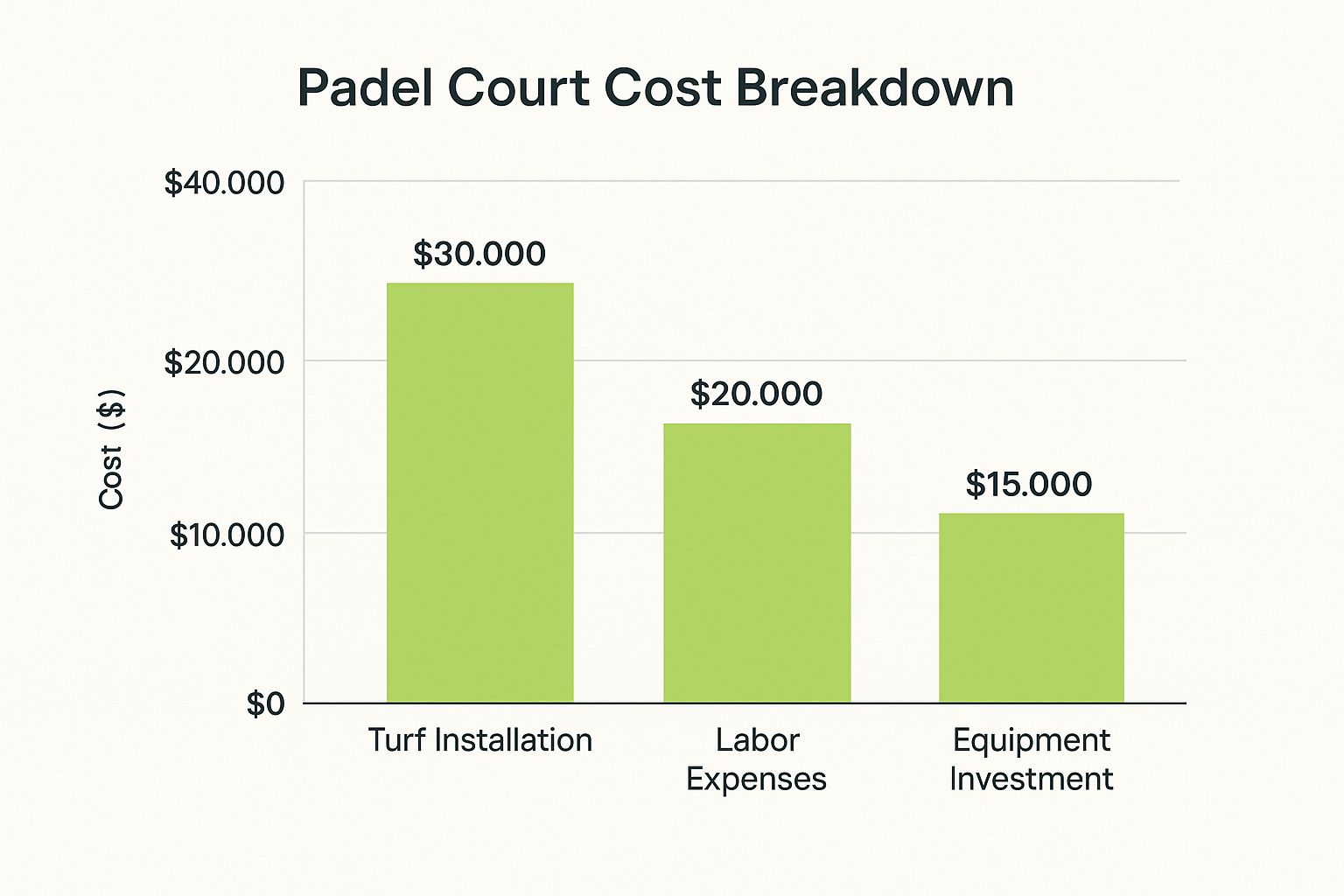
This really drives home the point that while the turf is a major line item, you've got to balance it against the significant costs of just getting the court built in the first place.
Illuminating Your Court: The Lighting Dilemma
Good lighting isn’t just a nice-to-have; it’s a critical tool for making money. With a well-lit court, you can extend your playing hours long into the evening, effectively doubling your booking potential, especially in those darker winter months. The big debate here really boils down to traditional lighting versus modern LED systems.
A Head-to-Head on Lighting Options
Let's take a closer look at how these two lighting technologies stack up. It’s about more than just the price tag; it's about performance, running costs, and long-term value.
Comparison of Padel Court Lighting Options
| Feature | LED Lighting | Traditional Halogen/Metal Halide |
|---|---|---|
| Initial Cost | Higher | Lower |
| Energy Consumption | Very Low | High |
| Lifespan | 50,000+ hours | 6,000 – 15,000 hours |
| Maintenance Needs | Minimal; infrequent replacement | Frequent bulb and ballast replacement |
| Light Quality | Bright, uniform, instant-on | Can flicker, requires warm-up time |
| Long-Term Value | Excellent ROI through energy savings | Poor ROI due to high running costs |
Traditional options like metal halide or halogen lamps will have a lower price tag on the invoice. That can be pretty tempting when you're watching your budget closely. But that initial saving can disappear fast when you factor in higher energy bills and the constant need for maintenance. Those old-school bulbs just don't last very long and need replacing all the time.
On the flip side, you have modern LED lighting. Yes, the upfront investment is higher, but it’s the undisputed champion when it comes to long-term value. LEDs use a fraction of the power—often up to 60% less than traditional lights—which means huge savings on your electricity bills month after month. They also last for an incredibly long time, cutting down on replacement costs and the headache of maintenance downtime.
"Investing in high-quality LED lighting is one of the smartest financial decisions a club owner can make. The operational savings and enhanced player experience provide a return on investment that far outweighs the initial cost."
So, while traditional lights might save you a bit of cash at the start, the massive operational savings from LEDs will likely pay for the difference in just a few years. For any commercial facility, going with LEDs is almost always the more strategic and profitable choice for the long haul.
How Padel Court Costs Vary Globally
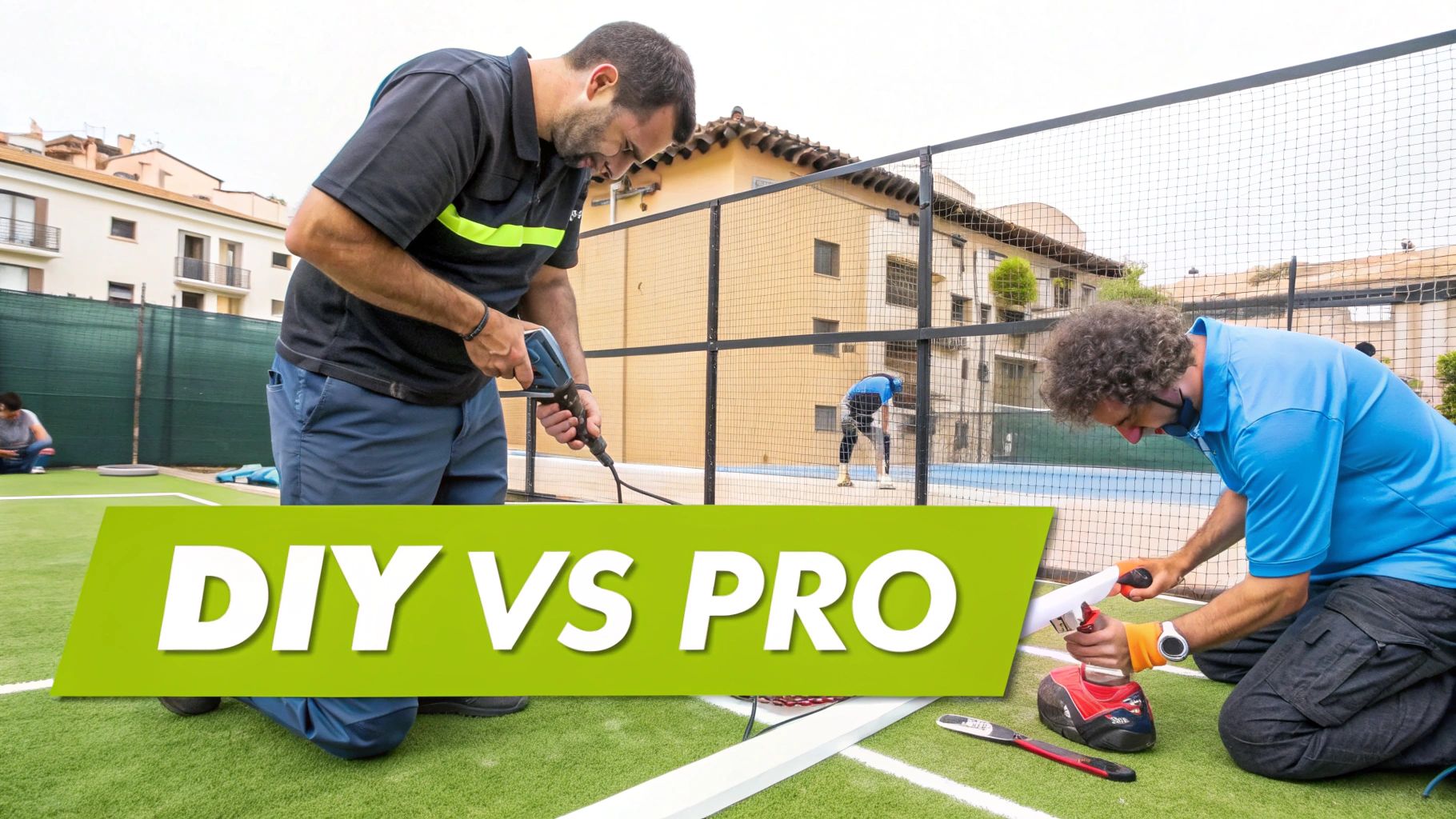
There's no single price tag for a new padel court. Just like the cost of living changes dramatically from one city to the next, the final bill for a court is tied directly to your spot on the world map.
This isn't just about converting currencies. Local labor rates, material import duties, shipping logistics, and even the climate all throw their own numbers into the equation. A court built in Spain, the heartland of padel, will have a completely different cost breakdown than one in Florida or Dubai. Getting a handle on these global differences is a must for anyone looking to invest.
The European Padel Powerhouse
Europe, and Spain in particular, is the undisputed epicenter of the padel universe. With a massive existing infrastructure and a mature supply chain, costs here tend to be much more competitive. The sport's incredible boom—now played by over 125 million people globally—has fueled both massive demand and incredible efficiency.
In these established markets, a high-quality court with all the trimmings (turf, glass, lighting, and installation) typically runs between €18,000 and €40,000 (that’s about $20,000 to $43,000). Why the lower price? It's simple supply and demand. The sheer volume of local manufacturers and seasoned installers pushes down shipping costs and labor expenses.
But head north, and the story changes. In places like the UK and Scandinavia, higher wages and stricter building codes can send the total investment climbing, often pushing it closer to the higher end of the spectrum we've discussed.
Emerging Markets: The US and The Middle East
As padel fever sweeps across North America and the Middle East, the cost dynamics shift again. These newer markets bring their own unique challenges—and opportunities—that directly shape the final price.
- United States: The US market is exploding, but it doesn't have the deep manufacturing base you find in Europe. This means crucial components like the specialized glass and turf often have to be imported, tacking on hefty shipping and customs fees.
- Middle East: In hotspots like the UAE and Saudi Arabia, the sport is on fire. While labor might be more affordable, the extreme climate introduces entirely new costs. Courts here often need tougher, heat-resistant materials and sometimes even fully air-conditioned indoor venues, which can make the investment skyrocket. The insane growth of padel in Dubai is a perfect example of how regional demand and climate dictate construction trends.
If there's one key takeaway for international investors, it's this: local knowledge is everything. Partnering with a supplier who gets the regional regulations, import laws, and climate challenges can save you from a world of expensive headaches and budget blowouts.
Key Regional Cost Drivers
So, what are the big factors pulling the price up or down in different countries? It really boils down to a handful of core elements.
- Labor Rates: The cost of skilled workers for groundwork, assembly, and electrical installation is a huge variable. A construction crew in Spain charges a very different daily rate than one in California or Sweden.
- Material Sourcing & Tariffs: Being close to the manufacturers is a massive advantage. If you have to ship heavy glass panels and steel frames across an ocean, logistics and import taxes can easily add 15-20% or more to your material costs.
- Regulatory & Permitting Fees: Cutting through local red tape has its price. The complexity and cost of getting building permits can vary wildly, with some urban areas having much tougher (and pricier) requirements.
- Climate Considerations: Building a court somewhere rainy? You'll probably need to invest more in drainage. In a location with blistering heat? You'll be looking at UV-protected turf and steel, which adds to the bill.
At the end of the day, the global padel court cost is a perfect lesson in local economics. While the court itself is a standard design, the journey to getting it built is uniquely shaped by its surroundings.
Padel vs. Tennis Court: An Investment Showdown
When club owners or investors are looking to add a racket sport, the classic debate always pops up: padel or tennis? While both have their die-hard fans, a head-to-head financial comparison quickly shows why padel is often the smarter bet, especially when you're working with limited space and want to maximize revenue.
The biggest game-changer is the footprint. A standard tennis court takes up a serious chunk of real estate. In that same space, you can comfortably fit two, sometimes even three, padel courts. This isn't just about saving space; it's about directly multiplying your potential income from the exact same piece of land.
This incredible space efficiency makes the initial padel court cost a much more appealing number right from the get-go.
Upfront Construction Costs
When you look at the initial investment, padel's smaller size translates directly into savings. A tennis court is just plain bigger, which means more groundwork, more surface material, and more fencing. That scale difference shows up clearly on the final invoice.
A typical tennis court installation in the UK, for instance, can set you back anywhere from £40,000 to £70,000. That covers the base, surface, fencing, and lights. While a top-tier padel court might creep into the lower end of that range, its smaller scale generally means lower costs for the heavy lifting like groundwork and materials. It's simply a more accessible entry point for many investors. You can dive deeper into the numbers yourself and learn more about this investment comparison.
The ability to generate revenue from three courts instead of one on the same piece of land fundamentally changes the business model. It allows for more simultaneous bookings, larger social events, and a more vibrant, community-focused atmosphere.
The Long Game: Maintenance and Upkeep
Beyond the initial build, a smart investment analysis means looking at the long-term returns. It’s a lot like homeowners evaluating the long-term worth of significant installations like a solar panel system. And this is another area where padel really shines.
Everyone knows that maintaining a tennis court, especially natural surfaces like grass or clay, can be a massive headache and a drain on the budget. Annual upkeep can easily hit £1,500 to £5,000 per court for things like resurfacing, repainting lines, and fixing nets.
Padel courts, on the other hand, are built for durability with their artificial turf and sturdy glass walls. They are comparatively a breeze to maintain. The ongoing costs are far more predictable and much easier on the wallet:
- Regular Brushing: The artificial turf just needs a routine brush-up to move the sand infill around and keep the fibers standing tall.
- Glass Cleaning: A periodic wash of the glass walls keeps things looking professional and ensures great visibility for players and spectators.
- Occasional Fixes: You might have a minor repair to the mesh or structure over the years, but these are generally few and far between.
This straightforward upkeep means your courts are open for business more often and your operational costs stay low. When you put it all together—the lower initial investment, the killer space efficiency, and the drastically reduced maintenance—the business case for padel becomes incredibly strong. This is especially true in urban areas where every square meter has a price tag. The numbers don't lie: a padel court investment can deliver a faster and more sustainable return.
Budgeting for Long-Term Maintenance and Operations
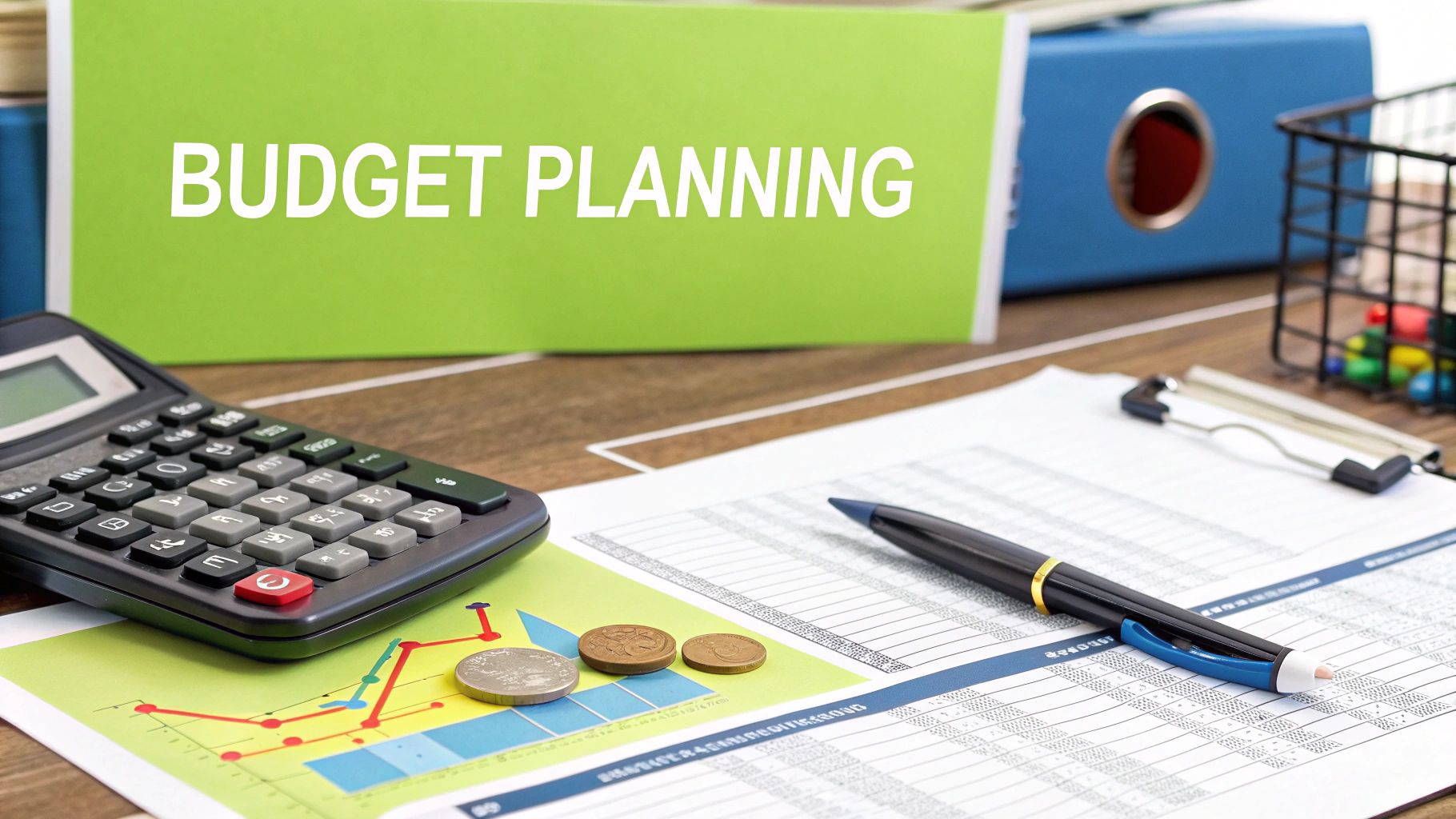
Cutting that final check to the construction crew feels great, but it’s a milestone, not the finish line. One of the biggest mistakes new owners make is seeing the initial padel court cost as a one-and-done deal. To build a club that lasts, you have to think about the entire life of your court, not just its birth.
Think of it like buying a new car. The sticker price is just the entry ticket; you still have fuel, insurance, oil changes, and new tires down the road. A padel court is exactly the same. The smartest owners bake these ongoing costs into their financial plans right from the start, which helps avoid nasty surprises that can drain your bank account.
This kind of forward-thinking is what separates the clubs that thrive from the ones that just survive. When you factor in maintenance and operations, you can set your court fees correctly, forecast your profits accurately, and make sure your facility stays a premium place to play for years.
Essential Physical Upkeep
You simply can't skip regular maintenance. It’s non-negotiable if you want to protect your investment, keep players safe, and ensure the court plays like it should. Let these tasks slide, and you're looking at premature wear and tear and much bigger repair bills later on.
You should budget somewhere between £500 to £1,500 per year for maintenance on a single court. The exact amount will depend on how much action your court sees and your local climate. This budget typically covers the essentials:
- Turf Maintenance: This is your most common job. Regular brushing keeps the silica sand evenly distributed, which helps the artificial grass fibers stand up straight. This is key for a true ball bounce and a longer-lasting surface.
- Glass and Fence Cleaning: Nobody likes playing inside a dirty fishbowl. Keeping the glass walls crystal clear is huge for visibility and just makes the court look professional.
- Structural Inspections: Give the steel frame, net posts, and gate a regular once-over. You're looking for any hint of rust or loose fittings that could become a safety issue.
Heads up: your turf won't last forever. You'll eventually need to replace the entire surface. Depending on foot traffic, a synthetic padel court surface lasts about 7-10 years. You absolutely must factor this major future expense into your long-term financial planning.
Beyond the Court Operational Expenses
A great padel club is more than just a court—it's a business. Your operational costs are just as vital as the physical upkeep, and they need a spot in your budget. Putting together a solid sports facility business plan is the best way to make sure you've accounted for all these ongoing expenses.
Here are the key operational costs you can't forget:
- Booking Software: In this day and age, an online booking system is a must. Plan for a subscription fee, which usually runs £30 to £100 per month.
- Utilities: Your biggest utility bill will likely be electricity for the LED lights, especially if you plan to keep the courts open after sundown.
- Insurance: Liability insurance is non-negotiable. It protects you, your staff, and your players in case of any accidents.
- Staffing: If you're bringing in coaches, running a pro shop, or have a manager on-site, payroll will be one of your biggest line items.
- Marketing and Promotion: You need to get the word out! Set aside a budget for local ads, social media campaigns, and tournaments to attract new players and build a real community.
Common Questions About Padel Court Costs
Even with a full breakdown in hand, it's natural to still have a few lingering questions about the total padel court cost. Let's tackle some of the most common ones that pop up when people are in the planning stage.
Think of this as your final sanity check. Getting these details ironed out now will save you headaches later, from getting approvals to figuring out when you'll start turning a profit.
How Can I Reduce the Initial Padel Court Cost?
The smartest way to save a serious chunk of change is by starting with the right piece of land. If you can find a site that’s already level and stable with good natural drainage, you’ll dodge a massive bullet on groundwork expenses.
An even better move? Convert an underused tennis court. This is a game-changer because the foundation—often the single priciest part of the entire build—is already in place.
Beyond the site itself, you can get clever with your material choices:
- Stick with a standard galvanized steel structure and welded mesh. The premium panoramic glass courts look amazing, but they come with a hefty price tag.
- Buy your basic materials, like concrete and aggregate, from local suppliers. You’ll be surprised how much you can save on transport fees.
- Think in phases. Get the court built and operational first, then add the extras like spectator benches or a fancy clubhouse down the line.
Just be careful not to cut corners on quality to save a few bucks upfront. Cheaper materials might mean you end up paying more in maintenance and repairs later on.
Do I Need Planning Permission for a Padel Court?
The short answer is almost certainly, yes. A padel court is a major construction project, not just a piece of equipment, so you'll very likely need to get planning permission from your local authorities. This is especially true if you want to install floodlights for nighttime play.
The exact rules and how you apply will depend entirely on where you live. Your first call should be to your local council’s planning department, and you should make it early in the process.
They'll be looking at things like the court's visual impact on the neighborhood, potential noise from players shouting and the ball hitting the glass, and whether your court lighting will bother nearby homes. Skipping this step is a huge risk—you could face massive fines or even be ordered to tear the whole thing down.
What Is the Expected ROI on a Padel Court?
The return on investment (ROI) for a padel court can be fantastic, but it all comes down to good management and a great location. For a well-run facility in an area with solid demand, it’s realistic to see the court pay for itself within 3 to 5 years.
Your money will come from court bookings, coaching lessons, tournaments, and renting out rackets and balls. To really crush your ROI, you need to build a community. A smart marketing plan and a super simple online booking system are non-negotiable for keeping your courts full and the cash flowing.
At Padel Rumors, we're here to give you the insights to make smart calls on everything from building your first court to running a successful club. Dive into our huge library of guides and resources at https://padelrumors.pages.dev to get support for every stage of your padel adventure.


